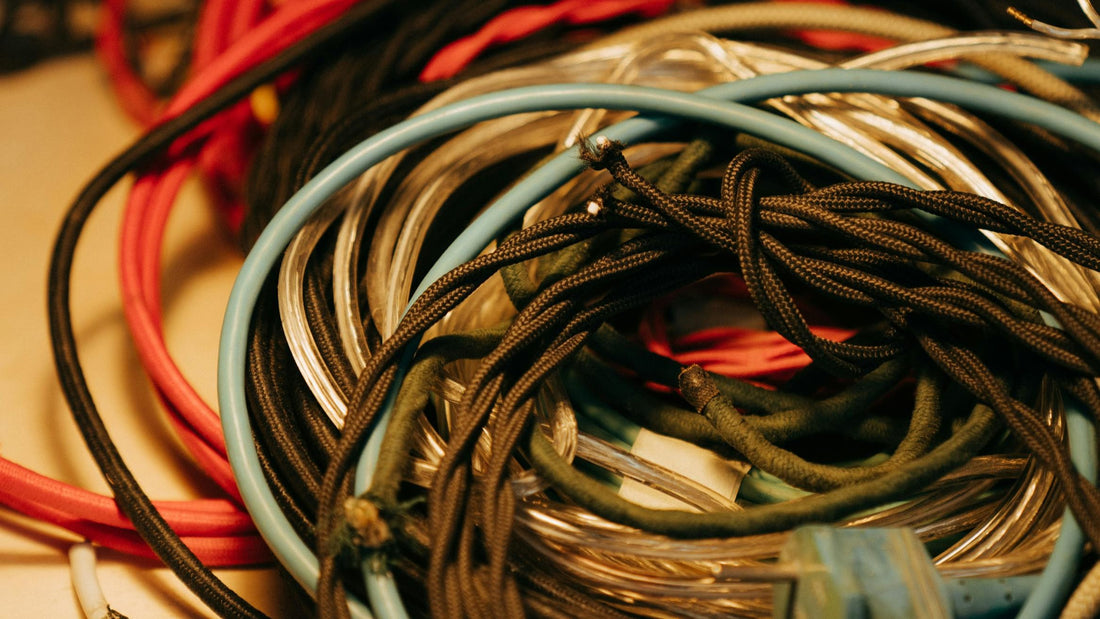
Troubleshooting Electrical Problems: When Wire Gauge is the Issue
Share
Introduction
Electrical issues can be frustrating and, at times, dangerous if not properly addressed. One common culprit behind many electrical problems is the improper selection or use of wire gauge. Wire gauge, which refers to the diameter of the wire, plays a crucial role in determining the wire's capacity to carry current, its resistance, and overall performance. In this blog, we'll explore common electrical problems caused by incorrect wire gauge and how to troubleshoot and resolve these issues.
1. Understanding Wire Gauge
What is Wire Gauge?
Wire gauge refers to the thickness of the wire, measured in gauges (GA). The gauge number inversely relates to the wire's diameter; a smaller gauge number means a thicker wire. The correct wire gauge ensures that the wire can safely handle the electrical current it needs to carry.
Why Wire Gauge Matters
Using the correct wire gauge is critical for preventing overheating, voltage drops, and potential fire hazards. Proper wire gauge ensures efficient power delivery and reliable operation of electrical devices and systems.

2. Common Electrical Problems Due to Incorrect Wire Gauge
Overheating Wires
When wires are too thin for the current they carry, they can overheat. Overheating not only affects the performance of your electrical system but can also pose a serious fire risk. Signs of overheating include warm or hot wires, discoloration, and melted insulation.
Voltage Drop
Voltage drop occurs when the voltage decreases as the electrical current travels through the wire. This is often due to using a wire gauge that's too small for the distance it needs to cover. Symptoms include dimming lights, malfunctioning appliances, and reduced efficiency of electrical devices.
Frequent Circuit Breaker Tripping
If your circuit breakers trip frequently, it could be due to an inadequate wire gauge. Thin wires may not handle the electrical load, causing the breaker to trip to prevent overheating. This is especially common in high-demand areas like kitchens and laundry rooms.

3. Troubleshooting and Identifying Wire Gauge Issues
Inspecting Wiring
Start by inspecting the wiring in your home or the affected area. Look for visible signs of damage, such as frayed wires, melted insulation, or discoloration. Use a wire gauge tool to measure the diameter of the wires and ensure they match the required specifications for your electrical system.
Testing Voltage and Current
Use a multimeter to test the voltage and current in the circuit. Compare these readings with the specifications of the devices connected to the circuit. If there's a significant voltage drop or the current exceeds the wire's capacity, it's a clear indication of an incorrect wire gauge.
Consulting Wire Gauge Charts
Consult wire gauge charts to determine the appropriate one for your specific application. These charts provide information on the current-carrying capacity of different wire gauges and the recommended distances for various loads. Ensuring that your wiring meets these guidelines is crucial for safety and performance.
| Wire Gauge (GA) | Maximum Current (Amps) | Recommended Distance (Feet) |
|---|---|---|
| 22 GA | 0.92 | Up to 10 |
| 20 GA | 1.5 | Up to 15 |
| 18 GA | 2.3 | Up to 25 |
| 16 GA | 3.7 | Up to 40 |
| 14 GA | 5.9 | Up to 50 |
| 12 GA | 9.3 | Up to 60 |
By using this table, you can ensure that your wiring meets the necessary requirements for both safety and performance, preventing issues like voltage drop or overheating. Adjustments may be needed based on specific equipment specifications and installation conditions.
4. Fixing Wire Gauge Problems
Replacing Inadequate Wires
If you've identified that the wire gauge is too small, the best solution is to replace the wires with a thicker gauge. This may involve rewiring parts of your electrical system to ensure all wires are adequately sized for their respective loads.
Upgrading Circuit Breakers
In some cases, upgrading your circuit breakers to match the new wire gauge may be necessary. Ensure that the circuit breakers are compatible with the new wiring to prevent further issues.
Professional Assistance
For complex wiring issues or if you're unsure about the correct wire gauge, it's best to consult a licensed electrician. Professional electricians have the expertise and tools to safely upgrade your wiring and ensure it meets all safety standards.

5. Preventing Future Wire Gauge Issues
Proper Planning and Installation
To avoid wire gauge problems in the future, plan your electrical installations carefully. Consider the current and future electrical loads, the distances wires need to cover, and use wire gauge charts to select the appropriate wire size.
Regular Maintenance and Inspections
Regular maintenance and inspections can help identify potential wire gauge issues before they become serious problems. Periodically check your wiring for signs of wear and tear, and test your circuits to ensure they operate within safe parameters.
Choosing Quality Materials
Investing in high-quality wiring materials is crucial for the longevity and safety of your electrical system. Opt for wires with good insulation and durability to prevent damage and ensure reliable performance.

Conclusion
Proper wire gauge selection is essential for the safety and efficiency of your electrical systems. By understanding the importance of wire gauge, identifying common problems, and taking proactive steps to troubleshoot and fix issues, you can ensure your electrical system operates smoothly and safely. Remember, when in doubt, consult a professional to ensure your wiring meets all necessary standards and requirements.








